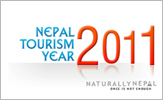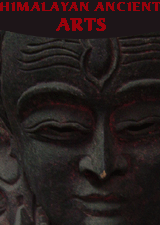Shop
By Type |
 |
|
|
|
|
|
|
|
|
|
|
|
|
|
|
|
|
|
|
|
|
|
|
|
|
|
|
|
|
|
|
|
|
|
|
|
|
|
|
|
|
|
|
|
|
|
|
|
|
|
|
|
|
|
|
|
|
|
|
|
|
 |
 |
Travel Packages  |
 |
 |
Newsletter |
 |
|
|
 |
|
 |
|
 |
|
 |
|
 |
|
 |
|
 |
|
 |
|
|
|
|
| FAQ |
| |
| ........................................................................................................................................................................................................................... |
FAQ
What is Himalayan Trekking?
A Responsible Adventures' trek is a small group adventure-walking holiday. Experienced leaders accompanied by Sherpa guides lead our treks. On average it involves 5-8 hours hiking per day, including lunch stop somewhere on the trail. A common misconception is that if you are a slow walker you may hold people back - not so! Our leaders and guides will constantly remind you that you are not on a race! During the day the group members often 'string out' and there will usually be an hour or so between the first to arrive in camp and the last. You walk at your own pace and stop when you feel like it. There will always be a crew member at the front and rear ensuring no one gets lost.
What do I have to carry?
You carry only the items you need during the day, such as your camera, water bottle and anorak in a light day sack; porters, horses, mules or yaks carry the main luggage.
What are the paths like?
Walking usually starts in highly cultivated foothills and works its way upwards into the mountains. The routes are centuries old village paths either on the floors of the valleys or gorges, following ridge lines, passing through forests, contouring hillsides, or crossing passes from one region to the next. They connect villages and lead to remote monasteries, using suspension bridges to cross-rivers. The longer, harder treks may cross glaciers and snow covered passes. Occasionally you might wade small streams.
Where do we sleep and who does the cooking?
On a camping trek you will be sleeping in a tent and eating in a mess tent. The dining venues are also a place for evening games, reading or writing diaries. Tables and chairs/stools and a lantern/candles re supplied by us. There is a full team of Sherpas/local staff to erect and dismantle tents. They cook, serve meals, wash-up and produce hot water for washing and 'bed tea'. They are great fun and invariably there are end of trek parties with singing and dancing. They have a separate kitchen tent and additionally there will be a toilet tent. There is always plenty of food and our cooks have a wide repertoire of local and European dishes. Special diets can be catered for. On some of our treks we use 'tea houses' or hotels and lodges.
Will we meet local people?
Trekking is a wonderfully relaxing pursuit in the company of like-minded people. It gives you a chance to make new friends, and enables you to interact with local people, who will surely invite you into their homes for yak-butter tea, or Chang (barley beer). Himalayan tribes-people are open hearted, generous and often display a mischievous sense of humor. The time in their company is often one of the fondest memories you bring home.
Photography
The air in the mountains is so clear that it is ideal for capturing those special memories. Sunsets and sunrises are often spectacular. The remoteness and the thin air provide exceptional opportunities for 'star gazing'.
Culture, History and cities
Part and parcel of a trekking holiday is the raw excitement of the atmosphere, sights and sounds of ancient capital cities. Their very name fire the imagination: Kathmandu, Lhasa, Thimpu, Gantok and the like. In cities we use 2-3 star hotels of character. We use the best available. We have found that a little luxury before and after the trek is always welcome. The history and religions are an important facet of your trek; we certainly recommend plenty of reading beforehand.
Mountain flights and road journeys
A trekking holiday almost certainly involves a Himalayan road journey or two, by private car, jeep or bus, and/or a flight in a small aircraft close to main peaks. These are hugely exciting in their own right.
Flexibility
Trekking is an adventurous pursuit in a Third World situation. Our itineraries allow a degree of flexibility in case of roadblock caused by landslide, breaking down of a vehicle, or cancellation of flight due to bad weather. We aim to provide the highest quality service available in the Himalaya, but one cannot legislate for the unexpected. Anyone booking one of our treks should possess a spirit of adventure, an easy going, laid back attitude and a capacity for tolerance. Do not expect an itinerary cast in stone; this by definition is definitely Adventure Travel.
Who's in-charge?
Experienced local leaders lead long treks into remote areas, our belief is that no one knows the area better than a local.
Group Size
We only take a maximum of 12 clients per lodge trek, 16 clients per camping treks and a maximum of 20 on tours such as Taste of Nepal. Keeping the world recession in mind, we have lowered our minimum group size from 6 to as small as 2 clients to avoid inconvenience to our respected clientele. The new minimum size is mentioned on each tour's headings.
Who travels with us?
Many clients of ours have been coming from all walks of life. The ages of our clients start from as young as mid 20s to their 60s and different nationalities although the medium of communication is English. The vast difference in age groups have never proven to be a problem as most people on trekking holidays are like-minded questing for adventure and fun.
What is the food like?
Meals are not included in the land cost on Our Journeys. We endeavor to make your experience of the local cuisine as unique and fascinating as the sights you'll see.
In addition to regional specialties, restaurants in the big cities span the international spectrum and you'll find something to suit every taste: Italian, French, Indian, American, Chinese and Japanese. Coffee shops and restaurants in the major hotels serve fairly authentic renditions of Western food.
On treks, your cook will prepare three hot meals a day with tea and biscuits in the afternoon. Breakfast consists of hot porridge, granola/cereal, pancakes, yogurt, coffee and tea. Lunch is eggs, dried meats, sandwiches and vegetables. Dinner starts with soup, followed by the main course and dessert. Dinner fare incorporates Indian, Nepalese, Tibetan, Bhutanese and Continental cuisines (depending on the region). Fresh meat is infrequently served. Trekking meals are hearty and basic. Main staples consist of rice, noodles (egg and wheat), potatoes, lentils, eggs, cheese, nan (bread from the subcontinent which resembles tortillas) and vegetables. Condiments such as catsup, chili, chutney, peanut butter, jelly, sugar, salt and pepper accompany every meal. If you are vegetarian or have other dietary needs, please let us know so we can best accommodate your request.
Whether you're on an overland cultural tour or a trekking adventure, we recommend you bring a bag of goodies to snack on. Choose items that pack and travel well, like crackers, energy bars, chocolate, nuts and dried fruits.
Can special dietary requirements be accommodated?
Usually it is no problem for us to meet special diet requirements. Be sure to let us know of any restrictions when you sign up for your trip.
What is the toilet situation?
In the cities, Snow Lion guests stay in 4- and 5-star hotels that have Western-style private bathrooms. Guesthouse or yurt accommodations on some of the more adventuresome trips into rural areas may be more basic, such as shared bathroom facilities.
The group camping gear on our treks in Nepal and Tibet includes Dutch-made environmentally-friendly, portable chemical toilets. These are secluded within a small tent, which is set away from camp.
Public facilities, such as in restaurants, can be basic and sometimes lack Western-style toilets. Be sure to take a packet of tissues in your daypack for travel days.
|
| |
| OUR PACKAGES |
| |
 |
 |
 |
| |
|
|
| HOME |
| ABOUT RESPONSIBLE ADVENTURE |
| OUR TEKKING PACKAGES |
| OUR TEAM |
| TREKKING INFORMATION (ADVICE) |
| FAQ |
| |
| ............................................................................................................................................................................................................................ |
|
TOP TREKKING DESTINATIONS |
| |
 |
Everest Base Camp Trek |
28 Days |
 |
Land Cost : US$ 815 |
View Detail ! |
 |
Everest Gokyo Trek |
20 Days |
 |
Land Cost : US$ 1100 |
View Detail ! |
 |
Annapurna Circuit Trek |
29 Days |
 |
Land Cost : US$ 600 |
View Detail ! |
 |
Annapurna Trek |
16 Days |
 |
Land Cost : US$ 800 |
View Detail ! |
 |
Langtang Valley Trek |
15 Days |
 |
Land Cost : US$ 1100 |
View Detail ! |
 |
Cultural Ladakh Trek |
15 Days |
 |
Land Cost : US$ 1100 |
View Detail ! |
 |
Kanenjunga Goachela Trek |
15 Days |
 |
Land Cost : US$ 1100 |
View Detail ! |
 |
Sikkim: Kanchenjunga Base Camp Trek |
15 Days |
 |
Land Cost : US$ 1100 |
View Detail ! |
 |
Bhutan Tour & Bhumtang Trek |
15 Days |
 |
Land Cost : US$ 1100 |
View Detail ! |
 |
Mount Kailash Trek |
15 Days |
 |
Land Cost : US$ 1100 |
View Detail ! |
 |
Kailash Pilgrimage |
15 Days |
 |
Land Cost : US$ 1100 |
View Detail ! |
 |
Central Tibet Tour |
15 Days |
 |
Land Cost : US$ 1100 |
View Detail ! |
 |
Best Of Nepal |
15 Days |
 |
Land Cost : US$ 1100 |
View Detail ! |
|
|
|
|
|
|
| |
|
|
|
|
|
| |
| |
| |
|
 |
|
 |
| |
|
|
| |
| |
|
|
 My
Shopping Basket My
Shopping Basket |
 |
| |
 Best
Seller Best
Seller |
 |
 |
 |
|
Grape Pashmina Shawl |
| Price: US$
71.43 |
|
|
|
| |
 Start
with your budget Start
with your budget |
 |
|
|
| |
 Tell
a friend Tell
a friend |
 |
Tell a friend and win exciting gifts...
Click here
to learn more. |
 |
 |
 |
 |
 |
 |
 |
| |
 |
|